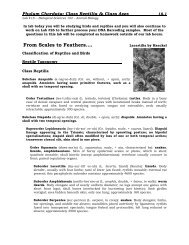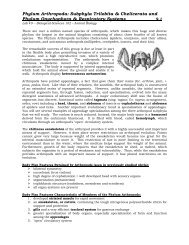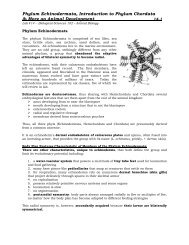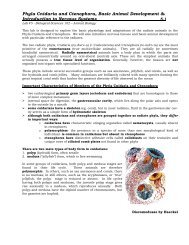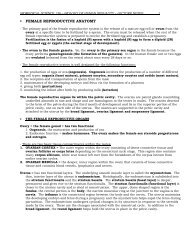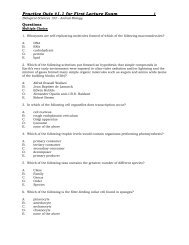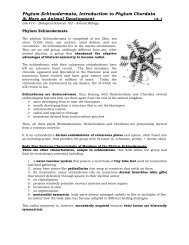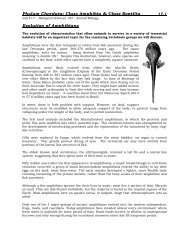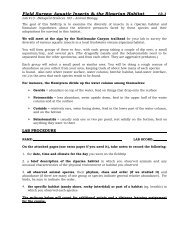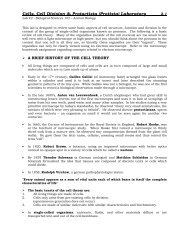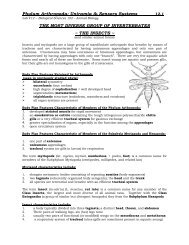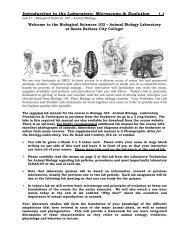Acoelomates: Phylum Platyhelminthes and Nemertea - Biosciweb.net
Acoelomates: Phylum Platyhelminthes and Nemertea - Biosciweb.net
Acoelomates: Phylum Platyhelminthes and Nemertea - Biosciweb.net
You also want an ePaper? Increase the reach of your titles
YUMPU automatically turns print PDFs into web optimized ePapers that Google loves.
<strong>Acoelomates</strong>: <strong>Phylum</strong> <strong>Platyhelminthes</strong> <strong>and</strong> <strong>Nemertea</strong> <strong>and</strong><br />
Pseudocoelomates: Phyla Nematoda <strong>and</strong> Rotifera & Parasitism 6.6<br />
Lab #6 - Biological Sciences 102 – Animal Biology<br />
‣ Concepts Related to Parasitic Worms<br />
Basic Requirements for a Parasitic Life<br />
1. The parasite must have or obtain access to a host(s)<br />
2. The parasite must establish itself <strong>and</strong> survive within the host(s)<br />
3. The parasite must show successful reproduction <strong>and</strong> transmission to a new host<br />
Special Parasitic Adaptations<br />
1. Invasion of the host can occur through many mechanisms:<br />
a. through the mouth with food <strong>and</strong>/or water<br />
b. through the skin by pe<strong>net</strong>ration<br />
c. through a vector such as a biting insect<br />
2. Establishment <strong>and</strong> survival within a host requires:<br />
a. transport of parasites/larvae/eggs in host through blood or lymph<br />
b. resistance to host's defenses (such as resistance to immune cells, circulating<br />
antibodies <strong>and</strong> acids <strong>and</strong> enzymes in the digestive tract for intestinal parasites)<br />
3. Reproduction, by cross fertilization:<br />
a. most trematodes <strong>and</strong> cestodes are monoecious (both sexes in one individual)<br />
b. most nematodes are dioecious; generally, males are smaller than females<br />
4. Parasitic Worm Life Cycles<br />
SEE THE DETAILED HANDOUT AVAILABLE ON THE COURSE WEBSITE<br />
a. Fertilization occurs within a host <strong>and</strong> fertilization is internal as a result of<br />
copulation. The parasite zygote develops into a shelled embryo which develops<br />
into a larval stage(s).<br />
b. SIMPLE PATTERN (monogenes, some tapeworms, nematodes)<br />
ZYGOTE -----> LARVA -----> ADULT -----> MANY EGGS<br />
c. COMPLEX PATTERN (digenes <strong>and</strong> some tapeworms)<br />
ZYGOTE --> 1st LARVAL STAGE--> 2nd LARVAL STAGE--><br />
3rd LARVAL STAGE --> ADULT --> MANY EGGS<br />
5. Dige<strong>net</strong>ic trematodes <strong>and</strong> cestodes have specialized surfaces consisting of a<br />
cellular syncytium with microvilli (microtrichs) which serve to increase the<br />
absorptive surface up to 50 times. Membrane surface serves to protect against<br />
host's digestive enzymes, serves in chemical modification of absorbed<br />
solutes, <strong>and</strong> serves in membrane transport



